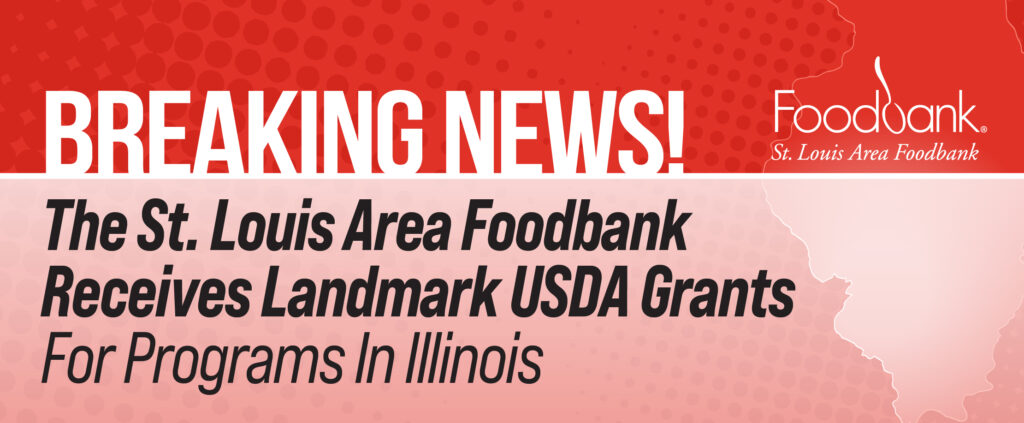Imagine you’ve worked a long day at the office, dealing with all the deadlines and responsibilities that come with a full-time job. And now, on top of your normal worries and obligations, you go home to find an empty refrigerator and cupboard. You have no idea what to feed your family.
For many of us, this reality simply means we need to make a trip to the store.
Unfortunately, running to the store is not an option for many of the clients served by the St. Louis Area Foodbank. By the middle of the month, they no longer have enough money left to buy food.
So for these individuals, the choices are limited. They can borrow food from friends or visit a food pantry. But sometimes the only available choice is to simply go without.
As the Foodbank’s SNAP Outreach Coordinator, I have the opportunity to meet many hard-working Americans who are struggling to put food on the table. For the clients I meet, the basic costs of living are far higher than the income they earn.
That’s why the Supplemental Nutrition Assistance Program (SNAP) is so important.
According to USDA, “many SNAP recipients are currently employed but they still need additional assistance so that they can put nutritious food on the table for their families. More than 29 percent of SNAP households had earnings in 2009 and 40 percent of all SNAP participants lived in a household with earnings.”
What is SNAP?
SNAP is the program formerly known as food stamps. It is this federal program that helps low-income individuals and families purchase healthy food.
SNAP benefits are placed on a plastic card (LINK in Illinois; EBT in Missouri) each month. The card works much like a debit card and can be used at grocery stores, convenience stores, farmers markets and co-ops.
Who is Eligible?
SNAP eligibility rules can be complex, but the most important factors to determine eligibility and amount available are the income and expenses of the household. The program also considers the number of people who live in the household and buy and prepare food together.
Importance and Impact
SNAP has been shown to reduce childhood food insecurity and the negative impact on cognitive and academic development as children grow older. Also, it allows families to transition to self-sufficiency and financial stability. Most participants leave the program within nine months. The dollar amount of SNAP benefits decreases 24 to 36 cents for every dollar earned by the individual.
SNAP not only allows families to purchase much-needed healthy food, but it also makes a positive impact on the local economy. Every dollar in SNAP benefits spent generates an additional $1.79 in local economic activity, helping create revenue for local food retailers and farms. A 5 percent increase in SNAP participate would generate $1.8 billion in new economic activity nationwide.
Benefits Unclaimed
Many who are eligible for SNAP benefits do not take advantage of the program. Sometimes they are too proud to accept help. In other cases, people in need do not have proper access to the application process. Some families in need may not even know they are eligible.
Each year, there are about $65 million benefits for low-income families that go unclaimed.
These resources could be used to provide good assistance for families who desperately need it. That’s why spreading awareness about SNAP facts is so important.
According to USDA research, 96 percent of Americans are aware of SNAP/food stamps, but only 43 percent of those who do not participate actually know they are eligible.
St. Louis Area Foodbank SNAP Outreach Efforts
The St. Louis Area Foodbank makes a conscious effort to educate and provide assistance to our clients. Every week, I visit our partner agencies – soup kitchens, shelters and food pantries – and provide application assistance to our clients.
I assist them with SNAP applications, answer questions, and guide them through the entire process from application submission to case management with their local Department of Human Services office.
Some clients I have assisted did not understand the program or even realize they were eligible. It is rewarding to help a family in need get food assistance through SNAP.
SNAP Outreach allows individuals and families the ability to continue to live productive and healthy lives. I am honored to be able to serve some of the most vulnerable individuals in the community.
Sources:
2005-2006 “What We Eat in America” study
The Food Assistance National Input-Output Multiplier (FANIOM) Model and Stimulus Effects of SNAP
https://www.ers.usda.gov/Publications/ERR103/
USDA Food and Nutrition Service https://www.fns.usda.gov/snap
Feeding America
https://www.feedingamerica.org
Food Stamp as Medicine: A New Perspective on Children’s Health
USDA FNS Nutrition Assistance Program Report Series – Supplemental Nutrition Assistance Program Report No. SNAP-10-CHAR
The Benefits of Increasing the Supplemental Nutrition Assistance (SNAP) Program Participation in your State
Making America Stronger: A Profile of the Food Stamp Programhttps://www.fns.usda.gov/ora/menu/Published/snap/FILES/Other/FSPProfile.pdf
FACT vs. Fiction: USDA’s Supplemental Nutrition Assistance Program
https://blogs.usda.gov/2011/06/24/fact-vs-fiction-usda%E2%80%99s-supplemental-nutrition-assistance-program/
Andrea Hale is the SNAP outreach coordinator at the St. Louis Area Foodbank



